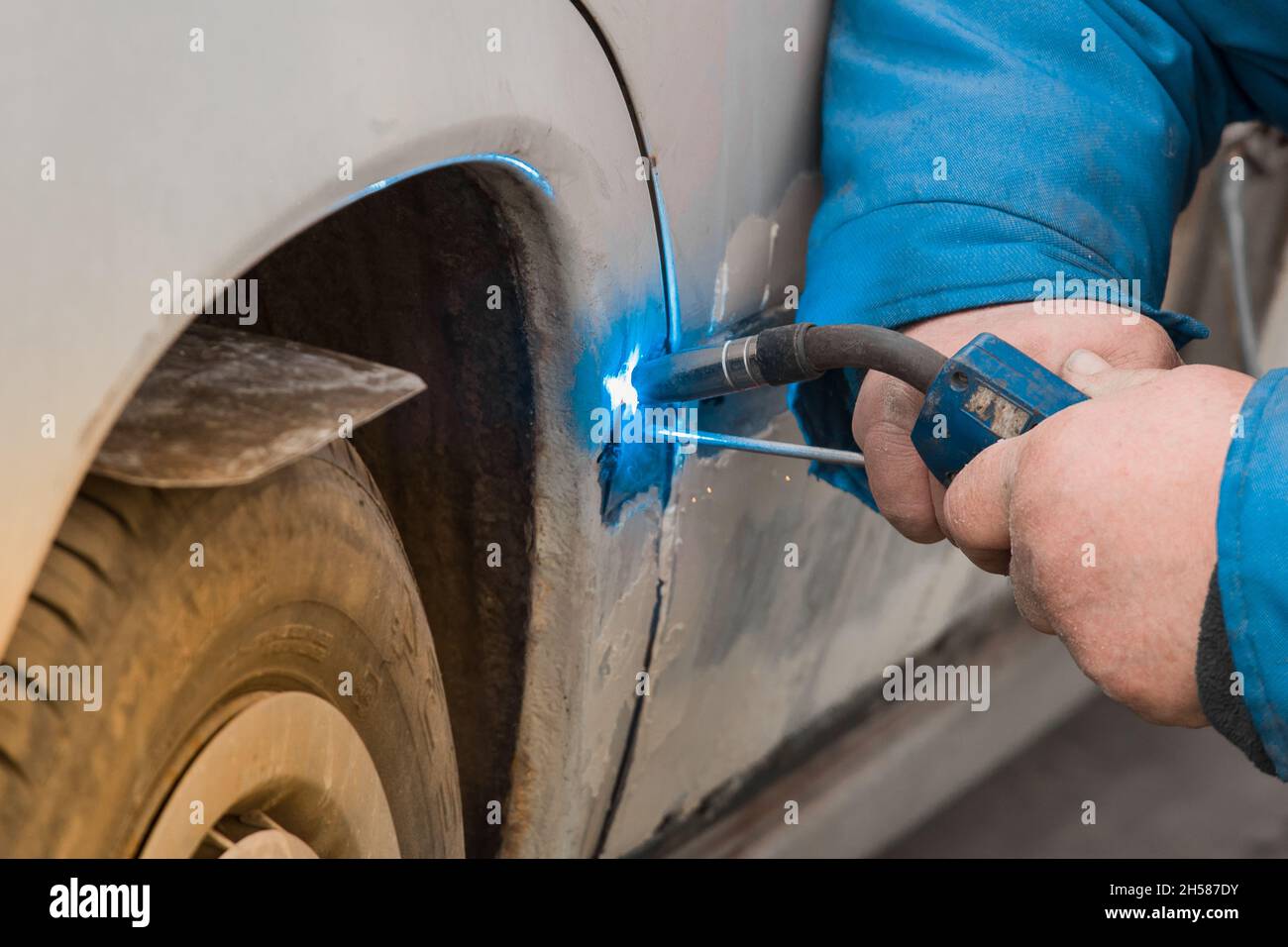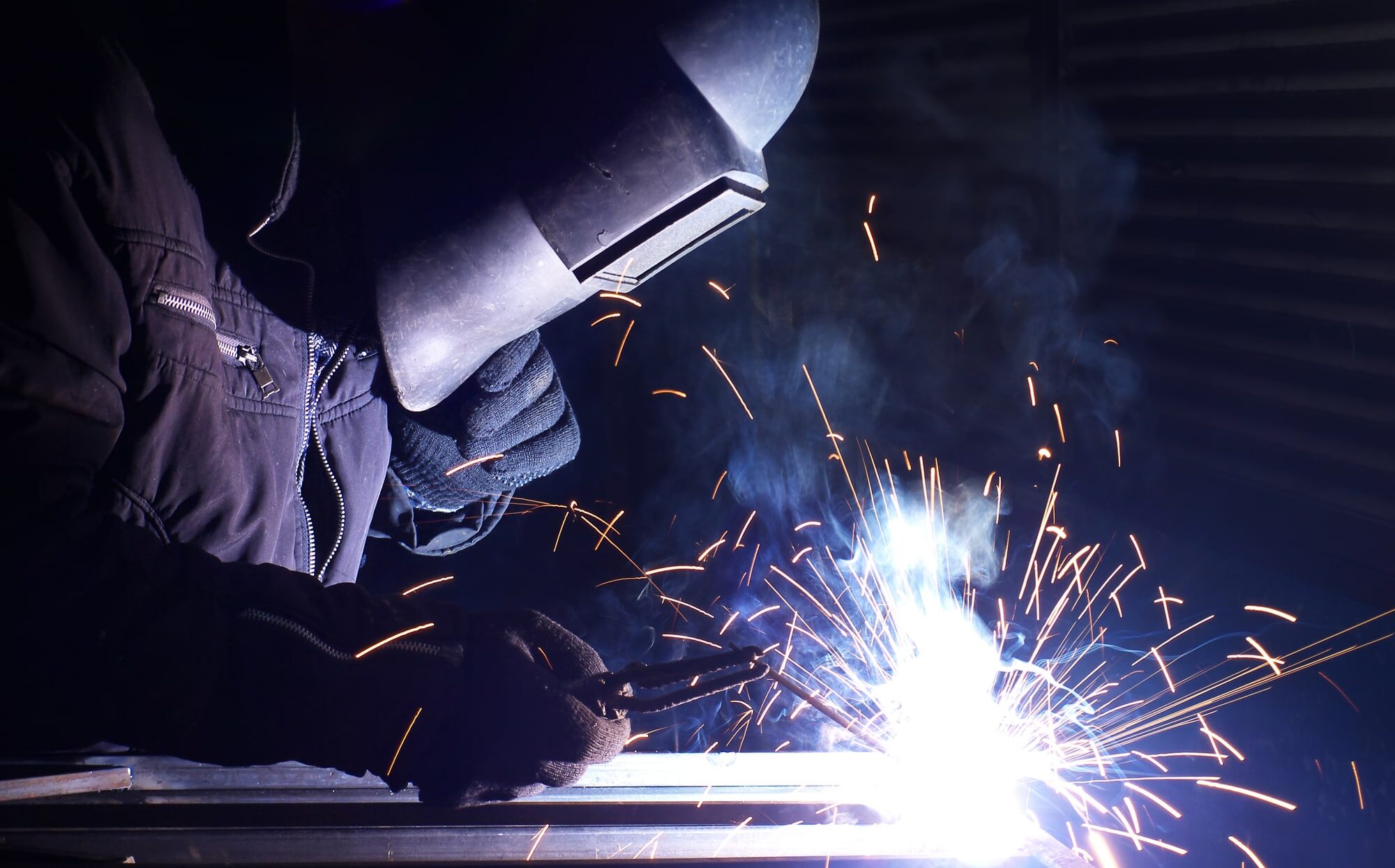Typical Welding Fixing Issues and Just How to Address Them Properly
Welding repair work usually come across a variety of problems that can threaten the honesty of the end product. Typical issues consist of insufficient infiltration, porosity, and misalignment, amongst others. Each problem provides unique obstacles that need details strategies for resolution. Comprehending these issues is important for welders aiming to enhance their skills and results. This discussion will certainly check out these typical welding repair service concerns and efficient approaches to address them.
Insufficient Penetration
Poor infiltration happens when the weld metal falls short to totally fuse with the base product, resulting in weak joints and possible architectural failures. This problem typically comes from not enough warmth input, wrong electrode angle, or incorrect welding speed. Welders might encounter inadequate infiltration because of a miscalculation of the required criteria for a details product thickness or type. Additionally, contamination on the base material's surface area can hinder efficient bonding, intensifying the trouble. To resolve poor penetration, welders need to ensure appropriate settings on their tools and preserve a clean work surface. Routine assessment of welds is advised to identify any type of shortages early, permitting timely corrections and the prevention of jeopardized architectural honesty in welded assemblies.
Porosity
Porosity is a typical problem in bonded joints that materializes as little gas bubbles entraped within the weld steel. This defect can jeopardize the honesty of the weld, causing reduced toughness and possible failure under anxiety. Fabrication. Porosity commonly arises from contamination, moisture, or inappropriate welding methods, which permit gases to escape right into the liquified weld pool. To attend to porosity, welders ought to guarantee appropriate surface prep work, preserve a tidy working setting, and make use of appropriate welding specifications. Furthermore, choosing the appropriate filler product and shielding gas can reduce gas entrapment. Regular evaluation and testing of welds can assist determine porosity early, guaranteeing prompt corrective activities are taken, consequently maintaining the top quality and reliability of the welded framework
Misalignment
Imbalance in welding can arise from different variables, consisting of improper setup and thermal development. Recognizing the origin is essential for reliable resolution. Numerous adjustment techniques are offered to straighten elements and guarantee structural integrity.
Sources of Imbalance
Welding misalignment commonly originates from a range of underlying concerns that can compromise architectural integrity. One main cause is incorrect fit-up of parts prior to welding, which can lead to spaces and unequal surface areas. Variants in thermal expansion during the welding procedure can additionally cause distortion, specifically if the materials being joined have various coefficients of growth. In addition, insufficient fixturing and clamping might fall short to hold components securely in position, bring about activity during welding. Inadequately conserved equipment, including welding machines and devices, might present incongruities in the weld bead, further adding to misalignment. Driver mistake, stemming from inadequate training or experience, can additionally play a substantial function in creating misaligned welds.

Correction Techniques Available
Addressing misalignment effectively calls for a combination of rehabilitative techniques customized to the certain problems available. One common approach is using components or jigs to hold components in the correct position during welding, making certain consistent placement. Furthermore, preheating the products can help in reducing distortion and improve fit-up. For substantial imbalance, mechanical realignment techniques, such as utilizing hydraulic jacks or clamps, can be employed to fix the setting before welding. Post-weld warmth treatment may additionally be essential to soothe stress and anxieties brought on by imbalance. Mindful examination and adjustment during the setup phase can stop misalignment concerns from ending up being substantial issues, promoting a smoother welding procedure and enhancing general architectural stability.
Distortion
Distortion is a typical challenge in welding that can emerge from different variables, consisting of uneven home heating and air conditioning. Recognizing the root causes of distortion is necessary for carrying out efficient prevention methods. Resolving this concern not only boosts architectural integrity however additionally improves the general top quality of the weld.
Reasons for Distortion
When based on the extreme warmth of welding, products usually undergo modifications that can lead to distortion. This phenomenon mainly develops from thermal development and tightening throughout the welding procedure. As the weld location heats up, the product broadens; upon cooling, it gets, which can produce interior stresses. On top of that, unequal home heating throughout a workpiece can intensify these tensions, causing warping or bending. The sort of material also plays a substantial role; steels with differing thermal conductivity and coefficients of growth might respond differently, resulting in unpredictable distortions. Poor joint design and inadequate fixturing can add to imbalance throughout welding, increasing the probability of distortion. Recognizing these reasons is vital for effective welding repair service and avoidance strategies.
Prevention Techniques
Reliable prevention methods for distortion throughout welding concentrate on controlling warmth input and ensuring proper joint layout. Keeping a regular warmth input helps to reduce thermal development otc robot and contraction, which can bring about distortion. Using strategies such as pre-heating the workpiece can likewise minimize the temperature gradient, advertising uniform home heating. Additionally, choosing ideal joint styles, such as T-joints or lap joints, can boost stability and lower stress focus. Executing correct fixturing to protect the work surfaces in place further aids in preserving positioning during the welding procedure. Finally, staggered welding sequences can disperse warmth much more uniformly, stopping localized distortion. By using these strategies, welders can considerably decrease the chance of distortion and improve the total quality of their welds.
Splitting
Splitting is a typical issue encountered in welding fixings, frequently arising from different aspects such as incorrect cooling rates, product selection, or poor joint prep work. The occurrence of fractures can substantially compromise the stability of the weld, causing possible failures throughout procedure. To resolve this concern, welders should initially assess the origin, making certain that products are suitable and suitably chosen for the specific application. Furthermore, managing the air conditioning rate during the welding procedure is vital; quick cooling can cause stress and anxiety and result in splitting. Correct joint design and prep work additionally contribute to minimizing the threat. Applying these methods can boost weld high quality and sturdiness, eventually decreasing the chance of cracking in ended up weldments.

Insufficient Blend
A significant problem in welding repair work is incomplete fusion, which occurs when the weld metal does not sufficiently bond with the base material or previous weld passes - Montana Mobile Welding and Repair Belgrade Welding. This defect can result in weak points in the joint, potentially endangering the integrity of the bonded framework. Factors contributing to insufficient fusion include inadequate warm input, incorrect welding strategy, and contamination of the surfaces being signed up with. To address this issue effectively, welders must assure appropriate pre-weld cleaning and surface prep work, in addition to readjust their welding criteria to achieve appropriate penetration and blend. Normal examination during the welding procedure can also assist identify incomplete fusion early, permitting timely rehabilitative procedures to enhance the overall quality of the weld
Overheating
While welding repair services can enhance structural honesty, overheating provides a substantial challenge that can result in material destruction. Excessive warmth throughout welding can alter the mechanical residential properties of steels, causing decreased strength, enhanced brittleness, and warping. This sensation is particularly critical in high-stress applications where structural integrity is paramount. Recognizing overheating can entail aesthetic examinations for staining or distortion, in addition to monitoring temperature level during the welding procedure. To minimize the risks related to overheating, welders ought to use abs welding appropriate strategies, such as managing heat input, readjusting travel rate, and utilizing suitable filler materials. Additionally, executing pre- and post-weld warmth treatments can assist restore product homes and improve the overall high quality of the repair, making certain long-term efficiency and security.
Regularly Asked Inquiries
What Are the Usual Indicators of a Welding Defect?

How Can I Evaluate My Welds for High quality?
To evaluate welds for high quality, one can use aesthetic evaluations, ultrasonic screening, and radiographic methods. Each strategy assures structural honesty, determines problems, and validates adherence to defined criteria, ultimately improving the integrity of the bonded joints.
What Security Precautions Should I Take While Welding?
When welding, one ought to prioritize safety by putting on ideal individual protective devices, making certain appropriate air flow, protecting flammable products away, keeping a tidy work area, and knowing surroundings to avoid mishaps and injuries.
Can I Repair a Weld Without Redoing the Entire Joint?
Fixing a weld without redoing the entire joint is possible, depending upon the damage (Montana Mobile Welding and Repair Belgrade Welding). Strategies such as grinding, adding filler material, or utilizing a welding procedure can properly address details defects while maintaining the bordering structure
What Devices Are Necessary for Reliable Welding Services?
Important devices for efficient welding repair work include a welding machine, cord brush, mill, protective gear, clamps, and filler products. Each tool plays a crucial function in ensuring quality and security during the fixing process. Porosity generally develops from contamination, dampness, or improper welding techniques, which permit gases to run away right into the molten weld pool. Poorly conserved devices, consisting of welding machines and devices, might introduce variances in the weld bead, additional adding to misalignment. When subjected to the intense warmth of welding, materials usually undertake adjustments that can lead to distortion. Splitting is an usual concern encountered in welding repair services, often resulting from various factors such as improper air conditioning rates, product choice, or poor joint prep work. A substantial concern in welding repair services is incomplete official statement blend, which happens when the weld metal does not adequately bond with the base material or previous weld passes.